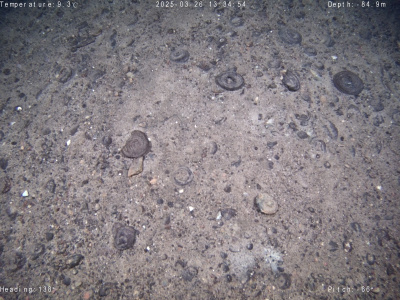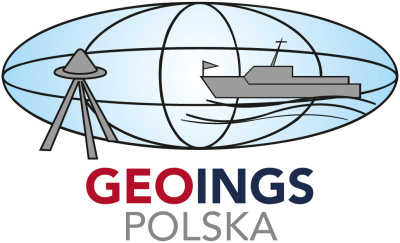
Fe-Mn concretion on the seabed; photo by Wojciech Machaj
The main objectives of the five-day research cruise that the University of Gdańsk's ship r/v Oceanograf undertook in the last week of March were to examine iron-manganese (Fe-Mn) concretions in the southern part of the Baltic Sea and in the area of the Polish Exclusive Economic Zone, and to make a preliminary estimate of prospective mineral resources. The expedition was also attended by employees of the Geological Museum of the Polish Geological Institute - Polish Research Institute (PGI-NRI).
The cruise was led by geologist dr hab. Leszek Łęczyński, prof. UG. In addition to employees of the Faculty of Oceanography and Geography of the University of Gdańsk, the scientific team also included scientists from the Geological Museum of the Polish Geological Institute and National Research Institute (PGI-NRI), the Faculty of Geology of the University of Warsaw and the Faculty of Navigation of the Maritime University of Gdynia. The last research on polymetallic Fe-Mn concretions was carried out in the 1990s by the Polish Geological Institute while creating maps of surface sediments on the bottom of the southern Baltic. Prof. Leszek Łęczyński, a geologist at the University of Gdańsk, knowing that the university had a modern ship, the Oceanograf, at its disposal, proposed that the research be resumed by a young team of doctoral students from the Universities of Gdańsk and Warsaw. The rectors of the Universities of Gdańsk and Warsaw and the director of PGI-NRI signed agreements supporting the research conducted by their doctoral students and employees.
Mgr Angela Popławska from the University of Gdańsk and mgr Michał Pilaszkiewicz from the Faculty of Geology at the University of Warsaw are conducting a study of concretions as part of their doctoral theses. This was another of the planned scientific and research expeditions carried out at several measuring sites. Our PhD student is investigating geochemical issues related to the occurrence of concretions, including their genesis, while her geologist colleague is analysing the mineral composition, the content of rare earth elements in the concretions and the prospects for exploitation. The scientific supervision of mgr Angela Popławska is provided by prof. dr hab. Magdalena Bełdowska and dr hab. Leszek Łęczyński, prof. UG, and of mgr Michał Pilaszkiewicz by prof. dr hab. Krzysztof Szamałek, Director of PGI-NRI.
During the cruise, which covered a distance of over 300 nautical miles, water and sediment samples were collected from 47 designated research stations. The seabed at a depth of over 50 meters was also documented using underwater drones operated by dr inż. Adam Kaizer (UMG) and Wojciech Machaj, a student at the University of Gdańsk's Faculty of Earth Sciences. One of the drones was provided free of charge by GEOINGS Polska.
An exhibition on the southern Baltic Sea is being prepared at the PGI-NRI Museum in Warsaw for December this year. It will promote seabed research, including Fe-Mn concretions, and present the research capabilities of the Oceanograf research vessel and scientists from the University of Gdańsk.
The guests were impressed by the equipment and research capabilities of the Oceanograf. They also appreciated the comfortable conditions in the cabins and the mess room, as well as the quality of the oceanographic cuisine. We invite you to read the detailed report of the cruise on the website of the PGI-NRI Museum: Museum staff explored the Baltic Sea bed - Polish Geological Institute - NRI.
The cruise was carried out under the cooperation agreement between PGI-NRI and the University of Gdańsk from 2024.

